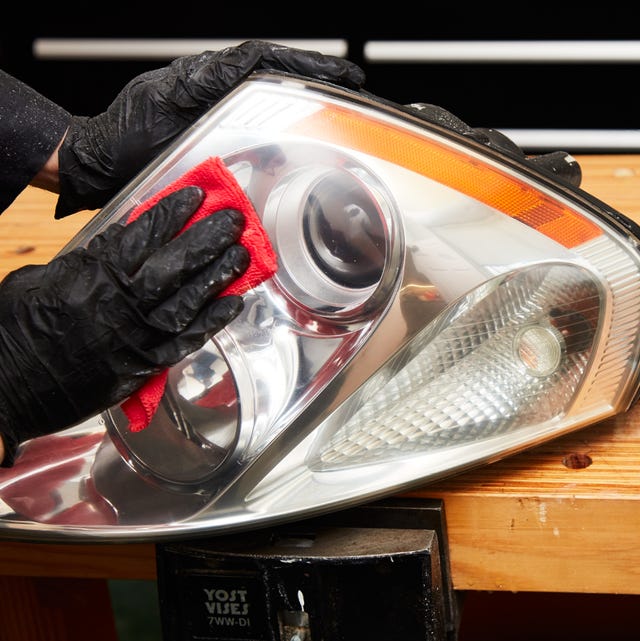4 Simple Techniques For Hikari Led Headlight
Table of Contents10 Simple Techniques For Hikari Led HeadlightThe 9-Minute Rule for Hikari Led HeadlightAbout Hikari Led Headlight
A headlamp system is needed to produce a low and a high beam, which might be produced by several pairs of single-beam lights or by a pair of dual-beam lamps, or a mix of single-beam and dual-beam lights. High beams cast the majority of their light straight ahead, taking full advantage of seeing distance but producing too much glare for safe usage when other cars are present on the roadway.Low beams have stricter control of upward light, and direct most of their light down and either rightward (in right-traffic nations) or leftward (in left-traffic countries), to offer forward visibility without extreme glare or backdazzle. Low beam (dipped beam, passing beam, meeting beam) headlamps provide a circulation of light designed to supply forward and lateral lighting, with limits on light directed towards the eyes of other road users to control glare.


Many low-beam headlamps are particularly developed for usage on only one side of the roadway. Headlamps for usage in left-traffic nations have low-beam headlamps that "dip to the left"; the light is dispersed with a downward/leftward bias to show the chauffeur the road and signs ahead without blinding approaching traffic.

Hikari Led Headlight Fundamentals Explained
Lots of tungsten (pre-halogen) European-code headlamps made in France by Cibi, Marchal, and Ducellier might be adapted to produce either a left- or a right-traffic low beam by methods of a two-position bulb holder. Because wrong-side-of-road headlamps blind oncoming drivers and do not adequately light the driver's method, and blackout strips and adhesive prismatic lenses minimize the security efficiency of the headlamps, some nations require all vehicles signed up or used on a long-term or semi-permanent basis within the country to be equipped with headlamps created for the appropriate traffic-handedness.
Lorry headlamps have actually been found unable to light up an assured clear range ahead at speeds above 60 km/h (40 mph). It might be risky and, in a couple of locations, unlawful to drive above this speed during the night. Some nations need cars to be geared up with daytime running lights (DRL) to increase the conspicuity of cars in motion throughout the daytime.
In Canada the DRL function needed on cars made or imported considering that 1990 can be provided by the headlamps, the fog lamps, steady-lit operation of the front turn signals, or by unique daytime running lamps. Functionally dedicated daytime running lamps not including the headlamps are needed on all brand-new cars initially offered in the European Union because February 2011.
Japan previously had bespoke lighting regulations comparable to the US standards, but for the a knockout post left side of the road. Nevertheless, Japan now follows the ECE requirement. The differences in between the SAE and ECE headlamp standards are mainly in the amount of glare permitted towards other drivers on low beam (SAE permits much more glare), the minimum amount of light needed to be thrown straight down the roadway (SAE needs more), and the particular places within the beam at which minimum and optimum light levels are defined.
Below the line is bright, and above is dark. On the side of the beam facing far from oncoming traffic (right in right-traffic countries, left in left-traffic nations), this cutoff sweeps or steps upward to direct light to road indications and pedestrians. SAE low beams might or may not have a cutoff, and if a cutoff is present, it might be of two different basic types: VOL, which is conceptually similar to the ECE beam because the cutoff is located at the top of the left side of the beam and aimed somewhat listed below horizontal, or VOR, which has the cutoff at the top of the ideal side of the beam and targeted at the horizon.
Relative studies have repeatedly shown that there is little or no general security benefit to either SAE or ECE beams; the 2 systems' approval and rejection by various countries is based primarily on which system is currently in usage. In North America, the style, efficiency and installation of all motor vehicle lighting devices are controlled by Federal and Canada Motor Car Security Requirement 108, which includes SAE technical requirements.
Hikari Led Headlight for Dummies
United States laws needed sealed beam headlamps on all cars in between 1940 and 1983, and other nations such as Japan, United Kingdom and Australia likewise made comprehensive use of sealed beams. [] In a lot browse around here of other nations, and in the US since 1984, replaceable-bulb headlamps predominate. Headlamps need to be kept in appropriate goal.
In the United States, SAE standard headlamps are aimed without regard to headlamp click here to find out more mounting height. This provides vehicles with high-mounted headlamps a seeing distance advantage, at the cost of increased glare to motorists in lower cars - hikari led headlight. By contrast, ECE headlamp objective angle is connected to headlamp installing height, to give all vehicles roughly equal seeing range and all drivers roughly equal glare.